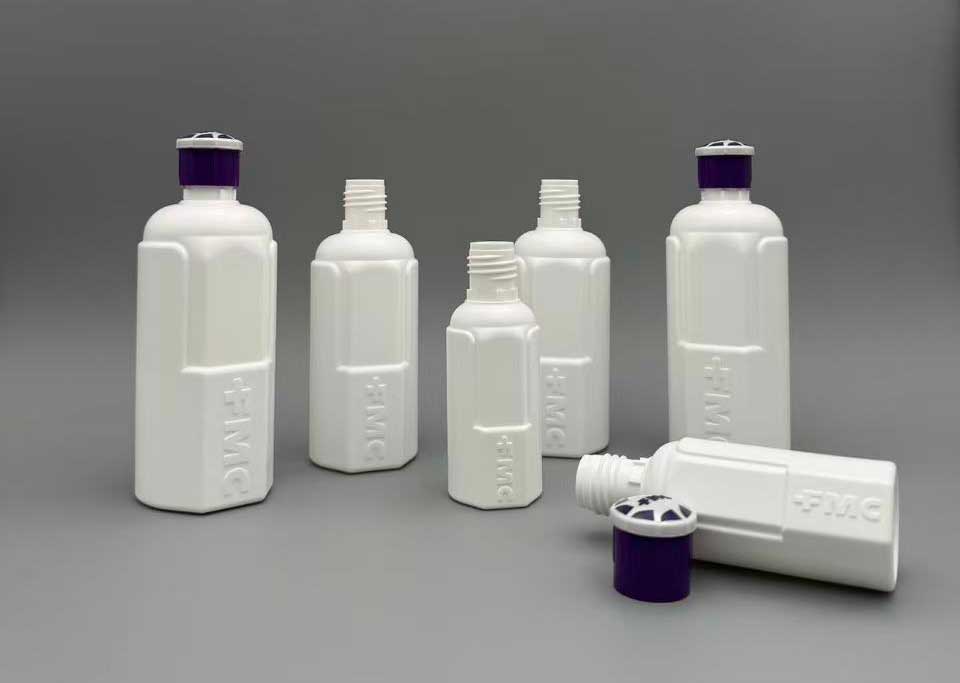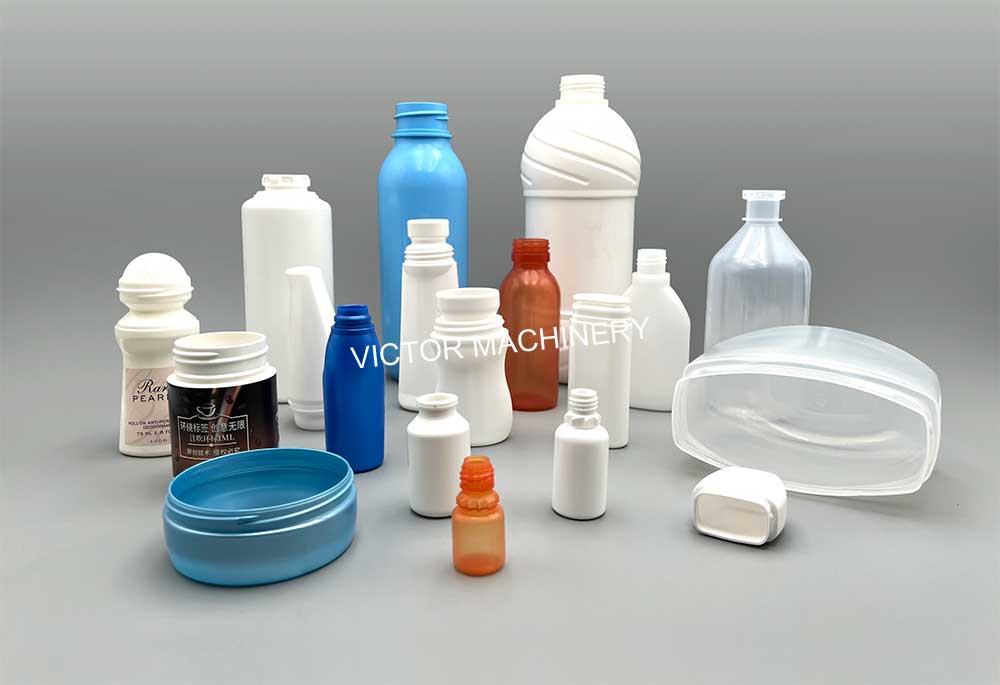Injection-Blow vs Extrusion-Blow: Key Differences in Precision, Process & Applications
Choosing the right blow molding technology can significantly impact product quality, cycle stability, and overall manufacturing cost. This guide explains the core differences between injection-blow (IBM) and extrusion-blow (EBM) molding — covering process flow, applications, raw materials, and equipment structure.
Whether you're producing small, high-precision bottles or large industrial containers, understanding how these two processes differ will help you make the right manufacturing choice.
What Are the Differences Between Injection-Blow and Extrusion-Blow Molding?
Although both processes create hollow plastic containers, their methods of forming, molding, and handling materials differ greatly.
Injection-blow molding excels in precision and finish quality, while extrusion-blow molding is ideal for large-volume and large-size containers.
1. Injection-Blow Molding (IBM)
Injection-blow molding is a two-step precision process:
-
Injection Phase
Molten plastic is injected into a preform mold around a core rod. This forms the neck and preform with extremely high accuracy. -
Blow Phase
The preform is transferred to the blow station, where compressed air inflates it into the final bottle shape. -
Stripping Phase
The finished bottle is removed cleanly, with no trimming required.
Advantages of Injection-Blow:
- Extremely accurate neck dimensions
- Smooth surface finish with low residual stress
- Ideal for small, high-precision bottles
- No flash trimming required
- Suitable for pharmaceutical, cosmetic, and laboratory packaging

Products commonly made using IBM:
- Eye drop bottles
- Nasal spray bottles
- Cosmetic lotion bottles
- High-end daily chemical containers
2. Extrusion-Blow Molding (EBM)
Extrusion-blow molding creates hollow parts by extruding a parison (tube-shaped plastic) and inflating it inside a mold.
Process Steps:
- Molten plastic is extruded into a tube (parison).
- The parison is clamped inside the mold.
- Compressed air inflates it into the cavity.
- The part cools and is trimmed to remove excess flash.
Advantages of Extrusion-Blow:
- Ideal for large containers (drums, jerry cans, tanks)
- Lower equipment cost compared to IBM
- Suitable for thick-walled products
- Flexible parison programming for size variations

Comparison Table: IBM vs EBM
| Feature | Injection-Blow (IBM) | Extrusion-Blow (EBM) |
|---|---|---|
| Preform Method | Injection-molded | Extruded parison |
| Precision | Very high | Moderate |
| Flash / Trimming | None | Required |
| Wall Thickness | Uniform | Less uniform |
| Best For | Pharma, cosmetics, small bottles | Large containers, industrial packaging |
| Surface Finish | Excellent | Moderate |
How Do IBM and EBM Equipment Work?
Each process uses different equipment structures designed for specific product types.
Injection-Blow Molding Equipment
IBM equipment includes:
- Injection unit – melts and injects plastic
- Blow unit – expands the preform using compressed air
- Stripping unit – removes the finished product automatically
This system ensures:
- High dimensional accuracy
- Clean, flash-free production
- Stable cycles for small precision bottles

Extrusion-Blow Molding Equipment
EBM machines rely on:
- Extruder – forms a tubular parison
- Blow mold – clamps and inflates the parison
- Trimming station – removes excess material
EBM is better for:
- Large bottles
- Fuel tanks
- HDPE jerry cans
- Industrial containers
It is simpler and cheaper than IBM, but less precise.
Raw Materials Used in IBM vs EBM
Each process supports different plastics depending on precision and production scale.
Materials for Injection-Blow Molding:
- HDPE
- PP
- PET (for high clarity)
- PS
- ABS
Chosen for:
- Low residual stress
- High dimensional stability
- Smooth surface finish
Materials for Extrusion-Blow Molding:
- LDPE
- HDPE
- PP
- PVC
- PETG
Chosen for:
- Good melt strength
- Ability to form thick-walled parisons
- Suitability for large containers

Summary Comparison Table
| Material | Injection-Blow | Extrusion-Blow |
|---|---|---|
| Suitable Plastics | HDPE, PP, PS, ABS | LDPE, HDPE, PP, PVC, PETG |
| Container Size | Small / medium | Medium / large |
| Precision | Very high | Moderate |
| Surface Quality | Excellent | Average |
Conclusion
Injection-blow molding is ideal for high-precision, small-format bottles, offering excellent accuracy and clean, flash-free production.
Extrusion-blow molding is the best choice for large containers and high-volume output, with simpler equipment and broader material compatibility.
Both technologies serve different segments of the packaging industry — and understanding their differences ensures you choose the most efficient process for your production needs.
📌 Explore Victor’s IBM Resources
If you're interested in learning more about injection blow molding or choosing the right IBM solution, here are useful guides and resources:
🔗 Recommended Reading
-
👉 Injection Blow Molding Machines
Explore Victor’s full IBM series for pharmaceutical, cosmetic, and daily chemical packaging. -
👉 Types of Bottles Made by Injection Blow Molding
Understand which bottle shapes and materials are best suited for the IBM process. -
👉 How Three-Station IBM Machines Work
A detailed breakdown of the injection, blowing, and stripping stages. -
👉 Energy-Saving Innovations in IBM Systems
Learn how modern IBM machines reduce power consumption and improve efficiency.





